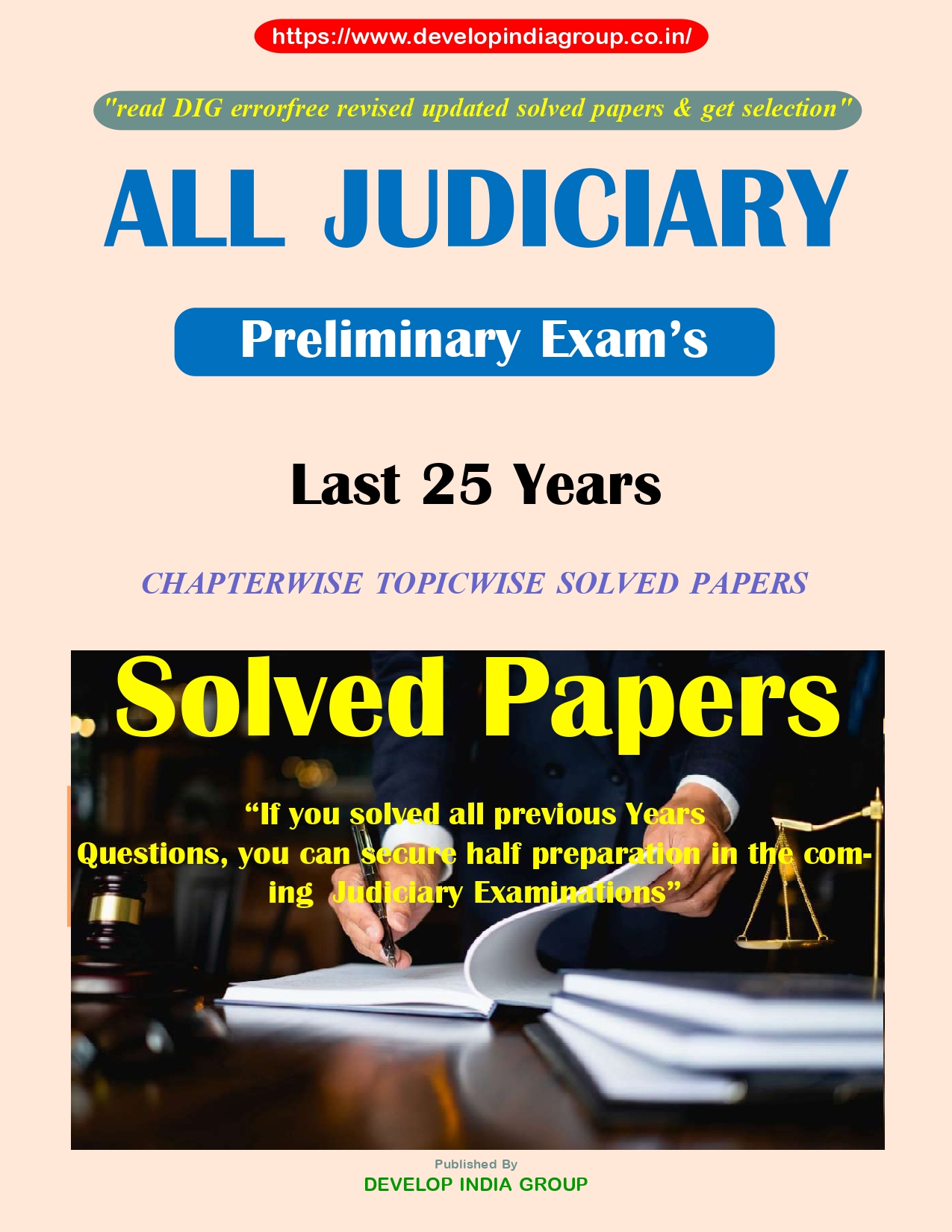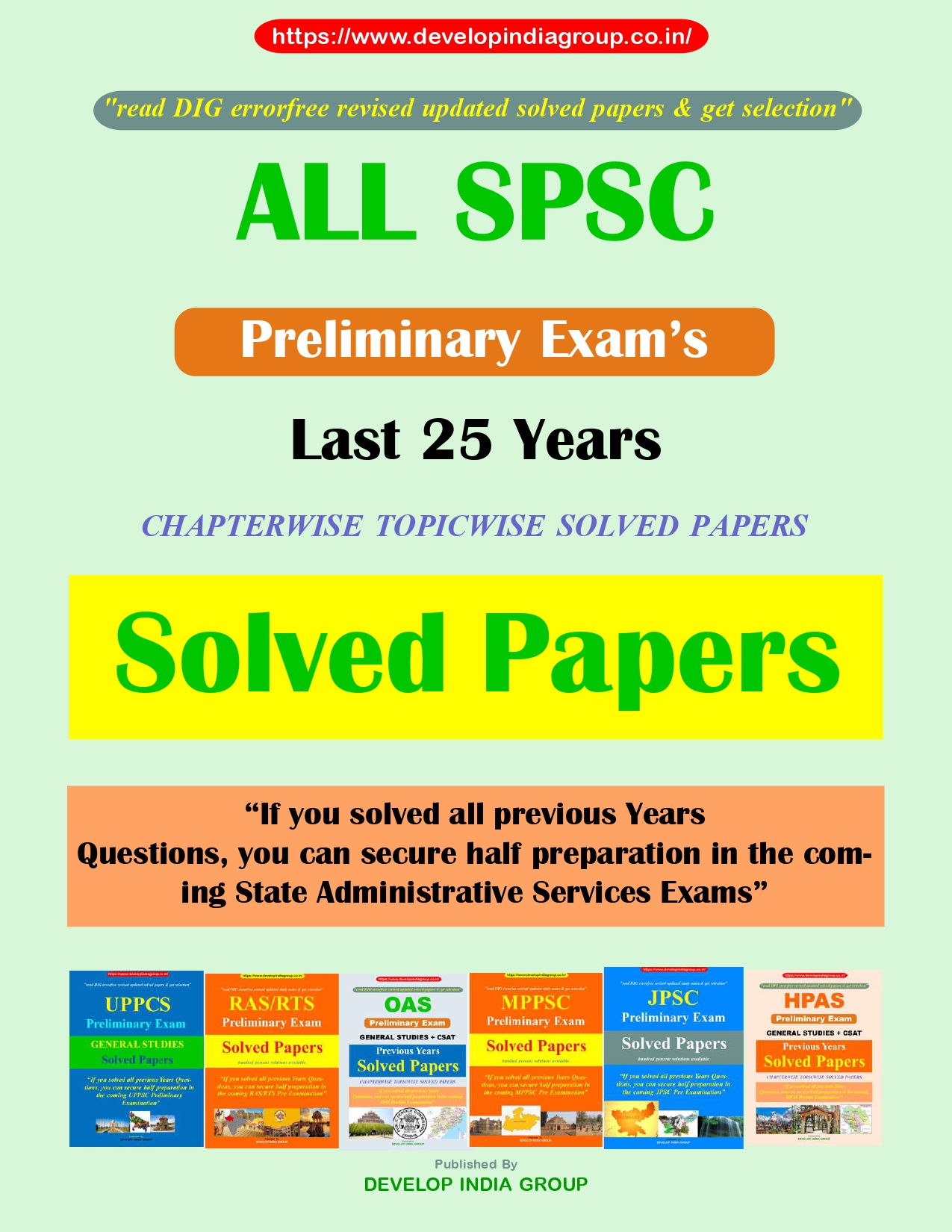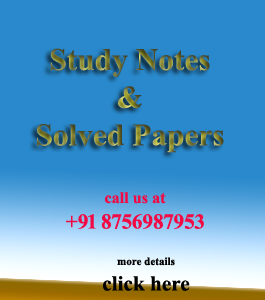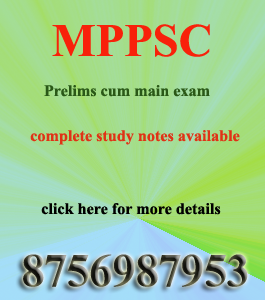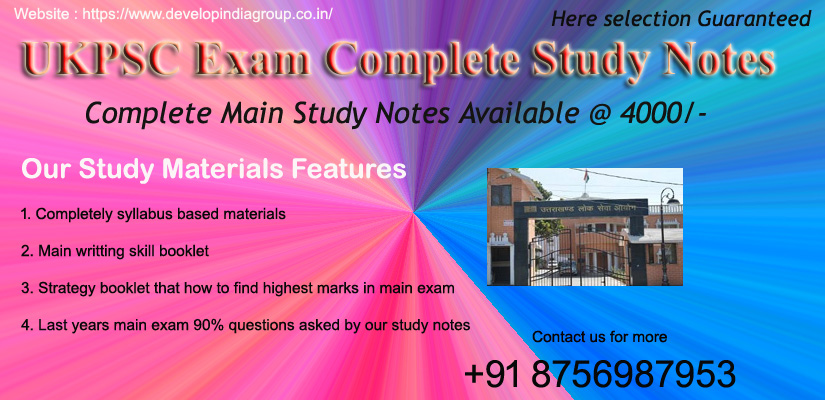

| Exams Categories |
|---|
| Quick Links |
|---|
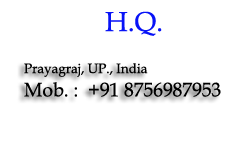
Click here for UPPCS Preliminary Exam Question Papers & Answer Keys
UPPCS Mains 2021 History Optional Paper - I
UPPCS Mains 2021 History Optional Paper I was conducted on 27 March 2022 in first shift i.e. from 9:30 AM to 12:30 PM. The total marks alloted for Mains History Optional Paper I is 200. Here are the questions asked in History Optional Paper I:
Special Instructions:
1. There are 8 questions divided in 2 sections and printed in both Hindi and English. Candidate has to attempt 5 questions in all.
2. Q No 1 and 5 are compulsory and out of the remaining, three are to be attempted choosing atleast one question from each section.
3. The number if marks carried by a question/part is indicated against it.
4. All questions carry equal marks.
खंड- अ /Section- A
1. (a) मध्य गांगेय मैदान में नगरीयकरण की पृष्ठभूमि के रूप में इस क्षेत्र की आद्य-ऐतिहासिक संस्कृति के महत्व का विवेचन कीजिए।
Discuss the importance of the protohistoric culture of this region as the background of urbanisation in the middle gangetic plain. (15)
(b) मौर्योत्तर काल में अंतर्देशीय एवं समुन्द्रपारीय व्यापार एवं उसके प्रभाव का मूल्यांकन कीजिए।
Evaluate the inland and overseas trade and its impact in the post Mauryan period. (15)
(c) वैदिक धर्म की प्रकृति और स्वरूप का वर्णन कीजिए।
Describe the nature and form of the vedic religion. (10)
2. (a) मगध के एक साम्राज्य के रूप में उथान में प्राक -मौर्य वंश के राजाओं के योगदान का समीक्षात्मक विवेचन कीजिए।
Critically discuss the contribution of the Kings of the pre-Mauryan dynasty in the rise of Magadha as an empire. (15)
(b) कृषि, पशुपालन, व्यापार और वाणिज्य के विशेष संदर्भ में हड़प्पा सभ्यता की अर्थव्यवस्था का वर्णन कीजिए।
Describe the economy of the Harappan civilization with the special reference to the agriculture, animal husbandry, trade and commerce. (15)
(c) "मौर्यकालीन लोक कला जनसामान्य की कलात्मक अभिव्यक्ति का एक सशक्त माध्यम है।" विवेचन कीजिए।
"Mauryan Folkart is a powerful medium of artisitc expression of the masses". Discuss. (10)
3. (a) साम्राज्य विस्तार की दृष्टि से समुद्रगुप्त के सैन्य अभियानों का समीक्षात्मक विवेचन कीजिए।
Critically discuss the military campaigns of Samudragupta from the point of view of expansion of empire. (15)
(b) "प्राचीन भारत में हर्षवर्धन अंतिम महान राजा था"। इस कथन का समीक्षात्मक विवेचन कीजिए।
"Harshavardhan was the last great King in Ancient India". Critically analyze this statement. (15)
(c) अजंता चित्रकला की विषयवस्तु का विवेचन कीजिए। तत्कालीन इतिहास पर वे क्या प्रकाश डालते हैं?
Discuss the themes depicted on Ajanta paintings. What light do they throw on contemporary history? (10)
4. (a) "छठी शताब्दी ईसा पूर्व के धार्मिक आंदोलन ने आर्थिक प्रगति को तीव्र करने के साथ ही सामाजिक परिवर्तन का मार्ग भी प्रशस्त किया।" विवेचन कीजिए।
"The religious movement of the 6th century BC accelerated economic progress as well as paved the way for social change." Discuss. (15)
(b) "संगम साहित्य में दक्षिण भारत के प्रारंभिक सामाजिक, आर्थिक व सांस्कृतिक जीवन का निर्देशन मिलता है।" वर्णन कीजिए।
"The early social, economic and cultural life of South India is found in the Sangam literature." Describe. (15)
(c) "गुप्त काल में विज्ञान, तकनीक, आयुर्वेद, खगोल शास्त्र, दर्शन शास्त्र और साहित्य के क्षेत्र में प्रगति ने भारतीय संस्कृति को एक मजबूत आधार प्रदान किया।" व्याख्यायित कीजिए।
"Progress in the field of science, technology, ayurveda, astronomy, philosophy and literature during the Gupta period provided a strong base to Indian culture." Explain. (10)
खंड- ब /Section- B
5. (a) "प्राचीन भारत में राजा भोज परमार एक महान राजा था।" क्या आप सहमत हैं? विवेचन कीजिए।
"King Bhoj Paramar was the great King in Ancient India." Do you agree? Discuss. (15)
(b) आर्थिक व प्रशासनिक सुधारों की दृष्टि से शेरशाह का मूल्यांकन कीजिए।
Evaluate Shershah from the point of view of economic and administrative reforms. (15)
(c) "नटराज शिव की मूर्तियों में दर्शन, विज्ञान एवं कला का दर्शन होता है।" इस कथन से आप कहाँ तक सहमत हैं? सोदाहरण विवेचन कीजिए।
"Nataraj Shiva images portray philosophy, science and art." To what extent do you agree with this statement? Discuss with example. (10)
6. (a) तुर्की आक्रमण के समय उत्तर भारत की राजनीतिक स्थिति एवं भारतीय राजाओं के पराजय के कारक तत्वों का वर्णन कीजिए।
Describe the political condition in North India during the Turk invasion and the factors that led to the defeat of the Indian kings. (15)
(b) "लघु एवं कुटीर उद्योगों के विकास की दृष्टि से दिल्ली सल्तनत का काल (1206-1520 ई.) महत्वपूर्ण है।" सप्रमाण विवेचन कीजिए।
"The period of Delhi Sultanate (1206-1520 AD) is important from the point of view of development of small and cottage industries." Discuss the evidence. (15)
(c) "शंकराचार्य ने भारतीय धर्म एवं दर्शन को एक सशक्त आधार प्रदान किया।" इस कथन का तथ्यात्मक विवेचन कीजिए।
"Shankaracharya provided a strong foundation to Indian religion and philosophy." Give a factual analysis to the statement. (10)
7. (a) एक योद्धा एवं प्रशासक के रूप में शिवाजी का मूल्यांकन कीजिए।
Evaluate Shivaji was a warrior and administrator. (15)
(b) लोदी सुल्तानों के राजत्व सिद्धांत का विवेचन कीजिए। यह दिल्ली के तुर्की सुल्तानों के शासन के राजत्व से कहाँ तक भिन्न था? वर्णन कीजिए।
Discuss the Kingship theory of Lodi Sultans. How far was it different from the theory of Kingship of Turkish Sultan of Delhi? Describe. (15)
(c) विजयनगर साम्राज्य के सामाजिक एवं आर्थिक जीवन का विवेचन कीजिए।
Discuss the social and economic life of the Vijayanagar Kingdom. (10)
8. (a) मुगल साम्राज्य में अमीरवर्ग की संरचना एवं उनकी भूमिका का मूल्यांकन कीजिए।
Evaluate the composition and role of the nobility in the Mughal Empire. (15)
(b) फतेहपुर सीकरी के विशेष संदर्भ में मुगल स्थापत्य कला की प्रमुख विशेषताओं का वर्णन कीजिए।
Describe the chief features of Mughal architecture with special reference to Fatehpur Sikri. (15)
(c) मुगलों के अधीन प्रांतीय प्रशासनिक व्यवस्था की सोदाहरण विवेचन कीजिए।
Discuss with example provincial administrative system under the Mughals. (10)
UPPCS Mains 2021 History Optional Paper - 2
UPPCS Mains 2021 History Optional Paper II was conducted on 27 March 2022 in second shift i.e. from 2:00 PM to 5:00 PM. The total marks alloted for Mains History Optional Paper II is 200. Here are the questions asked in History Optional Paper II:
Special Instructions:
1. There are 8 questions divided in 2 sections and printed in both Hindi and English. Candidate has to attempt 5 questions in all.
2. Q No 1 and 5 are compulsory and out of the remaining, three are to be attempted choosing atleast one question from each section.
3. The number if marks carried by a question/part is indicated against it.
4. All questions carry equal marks.
खंड- अ /Section- A
1. (a) प्लासी का युद्ध भारतीय इतिहास में निर्णायक युद्ध में क्यों गिना जाता है? विवेचना कीजिए।
Why has the battle of Plassey regarded as one of the decisive battle of Indian history? Discuss. (15)
(b) "प्रथम अफगान युद्ध भारत में ब्रिटिश शासन सबसे गंभीर भूल थी।" समीक्षात्मक मूल्यांकन कीजिए।
"First Afghan War was the most unqualified blunder committed in the history of British rule in India.(15)
(c) 'जहाँ ड्यूप्ले असफल रहा, क्लाईव ने सफलता पाई।' इस सन्दर्भ में आलोक में ड्यूप्ले तथा क्लाईव का तुलनात्मक मूल्यांकन कीजिए।
'Where Duplex failed Clive was successful.' In light of this statement, give a comparative estimate of Duplex and Clive.(10)
2. (a) क्या वास्तव में भारतीय राष्ट्रीय कांग्रेस का जन्म व्यक्तिगत प्रयासों की अपेक्षा परिस्थितियों का परिणाम था? विवेचना कीजिए।
Was the birth of Indian National Congress in fact the result of circumstances and individual efforts? Discuss. (15)
(b) ब्रिटिश शासन तथा भारतीय अर्थव्यवस्था सदैव चर्चा का विषय रहा है। भारत में औपनिवेशिक अर्थव्यवस्था के विकास के विभिन्न चरणों की विवेचना करें।
British rule and Indian economy have always been a topic of discussion. Discuss the various phases of the development of colonial economy in India. (15)
(c) भारत में किसानों और मजदूर वर्गों पर इतिहास लेखन द्वारा उठाए गए मुद्दों पर चर्चा कीजिए।
Discuss the issues raised by the history writing on peasantry and working classes in India. (10)
3. (a) उन्नीसवीं शताब्दी के उत्तरार्ध में जन आंदोलनों की महत्वपूर्ण विशेषताओं का विश्लेषण कीजिए।
Analyse the important features of mass movements during the second half of the nineteenth century. (15)
(b) महात्मा गांधी के आर्थिक विचारों पर चर्चा कीजिए। वर्तमान में उनके आर्थिक विचारों की क्या प्रासंगिकता है?
Discuss the economic views of Mahatma Gandhi. What is the relevance of his economic views in present times? (15)
(c) किस सीमा तक सामाजिक-धार्मिक आंदोलन तत्कालीन सामाजिक संरचना के विरुद्ध संघर्ष थे?
To what extent were the socio-religious movements a protest against the contemporary social structure? (10)
4. (a) कृषि के वाणिज्यीकरण पर प्रकाश डालें। इसने प्रत्येक हितधारक को किस प्रकार प्रभावित किया?
Throw light on the commercialization of agriculture. How did it affect each stakeholder? (15)
(b) ताज के शासन के प्रथम दशक के दौरान हुए प्रशासनिक परिवर्तनों की चर्चा करें।
Discuss the changes introduced in the administration during the first decade of the crown's administration. (15)
(c) "स्वराजवादियों और उनके स्वराज दल ने असहयोग आंदोलन के निलंबन के बाद आई राजनीतिक शून्यता को भरा था।" टिप्पणी लिखें।
"The Swarajists and their Swaraj Party filled the political vacuum which occurred after the suspension of Non Cooperation Movement." Comment.
खंड- ब /Section- B
5. (a) राष्ट्रवाद को परिभाषित करें। अन्तर्राष्ट्रीय परिप्रेक्ष्य में राष्ट्रवाद के उदय और विकास की व्याख्या कीजिए।
Define nationalism. Explain the emergence and growth of Nationalism in International perspective. (15)
(b) 1917 की बोल्शेविक क्रांति के क्या कारण थे? इसके परिणामों ने विश्व को किस प्रकार प्रभावित किया?
What were the reasons for the 1917 Bolshevik Revolution? How did its results affected the world? (15)
(c) "1848 का वर्ष आश्चर्यजनक घटनाओं का वर्ष था।" इस कथन की सत्यता का परीक्षण कीजिए।
"The year 1848 was a year of miracles." Examine the truth of this statement. (10)
6. (a) सिद्धांत एवं व्यवहार में 'मेटरनिख प्रणाली' का आलोचनात्मक मूल्यांकन कीजिए।
Critically evaluate 'Metternich System' in theory and practice. (15)
(b) प्रबोधन की विचारधारा की विभिन्न आलोचनाओं पर अपने विचार व्यक्त करें।
Express your views on various critiques of enlightenment thinking. (15)
(c) मार्क्स द्वारा प्रस्तुत वर्ग-संघर्ष की प्रक्रिया तथा उसके कारणों की विवेचना कीजिए। क्या यह विचारधारा वर्तमान में प्रासंगिक है?
Discuss the process of class-conflict and its causes as presented by Marx. Is this thinking relevant in present times? (10)
7. (a) "द्वितीय विश्व युद्ध का बीजरोपण वर्साय की संधि द्वारा हो गया था"। इस कथन का परीक्षण करें।
"The seeds of Second World War were sown by the Treaty of Versailles". Examine this statement. (15)
(b) "1925 के लोकार्नो समझौते ने युद्ध के वर्षों तथा शांति के वर्षों के मध्य वास्तविक विभाजन रेखा खींच दी।" इस कथन की व्याख्या करें।
"Locarno Pact of 1925 marked the real dividing line between the years of war and the years of peace." Explain this statement. (15)
(c) अन्तर्राष्ट्रीय राजनीति पर शीत युद्ध के प्रभावों का आलोचनात्मक परीक्षण कीजिए।
Critically examine the impact of Cold war on International politics. (10)
8. (a) "यह राष्ट्रसंघ नहीं अपितु संघ के राष्ट्र थे जो असफल रहे।" इस संदर्भ में राष्ट्रसंघ की असफलता का विश्लेषण कीजिए।
"It was not the League of Nations but the nations of the League that failed." In this context, analyse the causes of the failure of the League of Nations. (15)
(b) क्या द्वितीय विश्व युद्ध अवश्यम्भावी था? हिटलर इसके लिए कहाँ तक उत्तरदायी था? समझाएं।
Was the Second World War inevitable? How far was Hitler responsible for the war? Explain. (15)
(c) 'अरब राष्ट्रवाद तथा तेल' मध्य पूर्व की समस्या पर प्रभाव डालने वाले प्रमुख तत्त्व थे। समीक्षा कीजिए।
'Arab Nationalism and Oil' were the principal factors influencing the problem of the Middle East. Analyse. (10)




